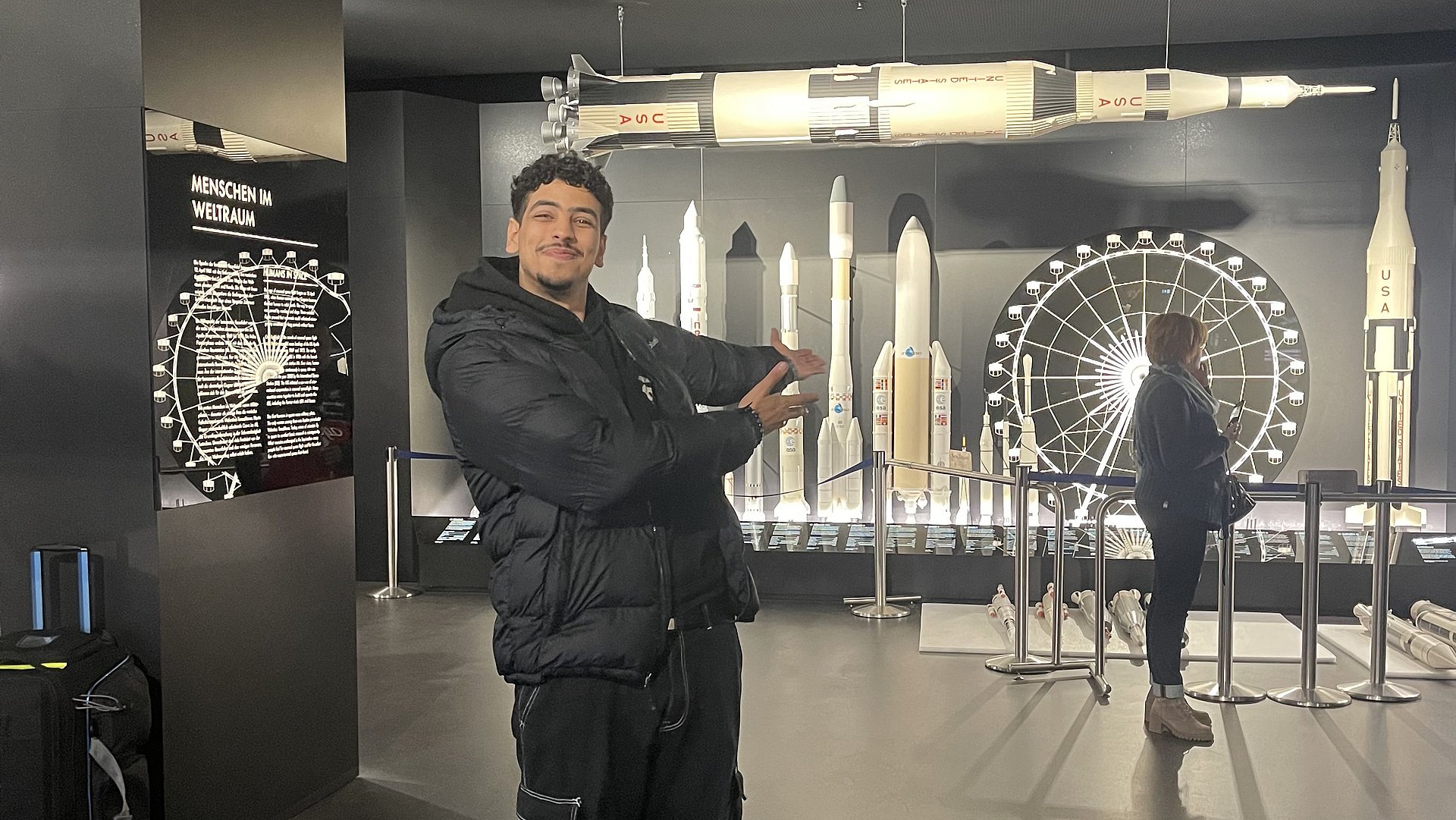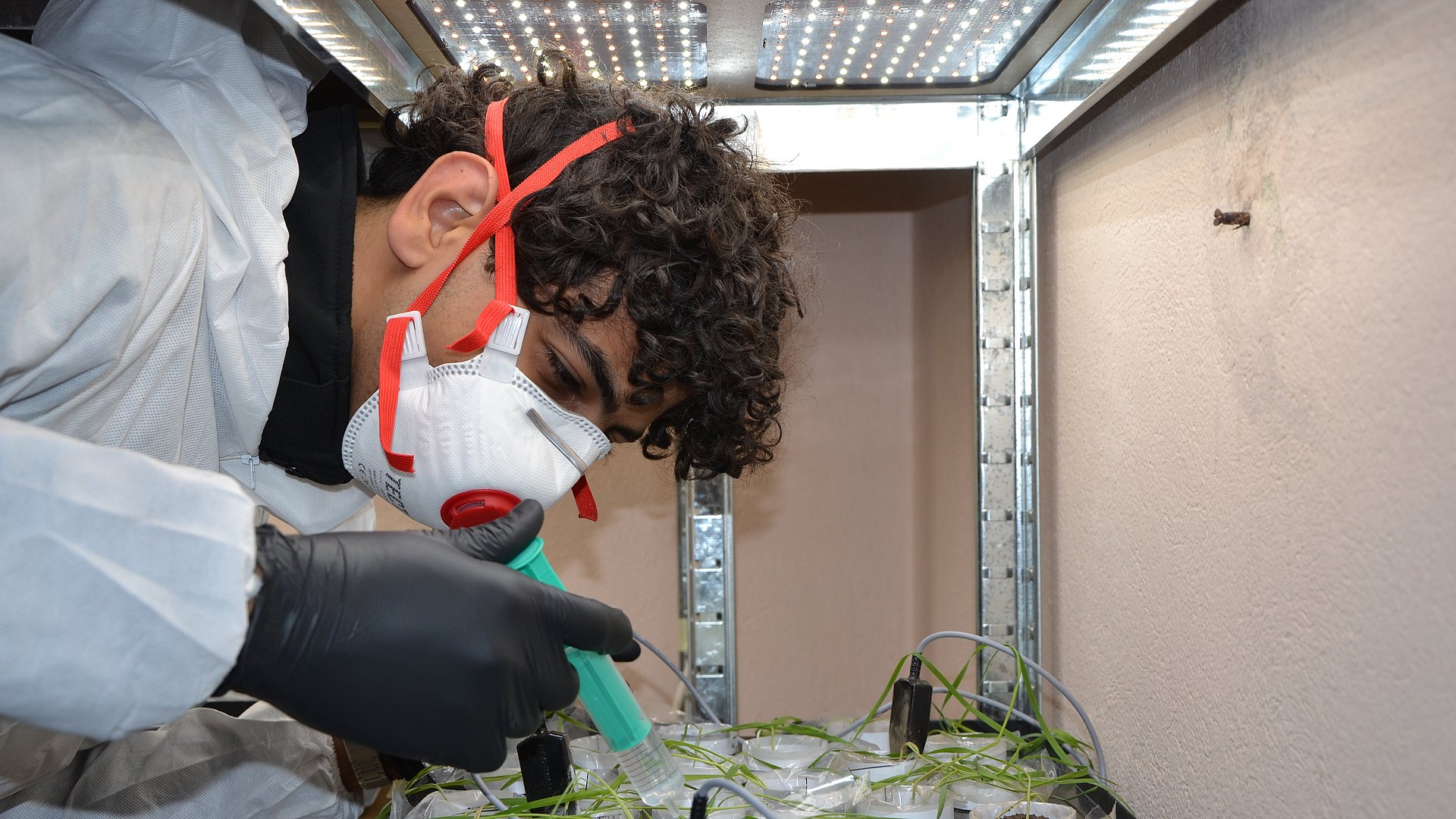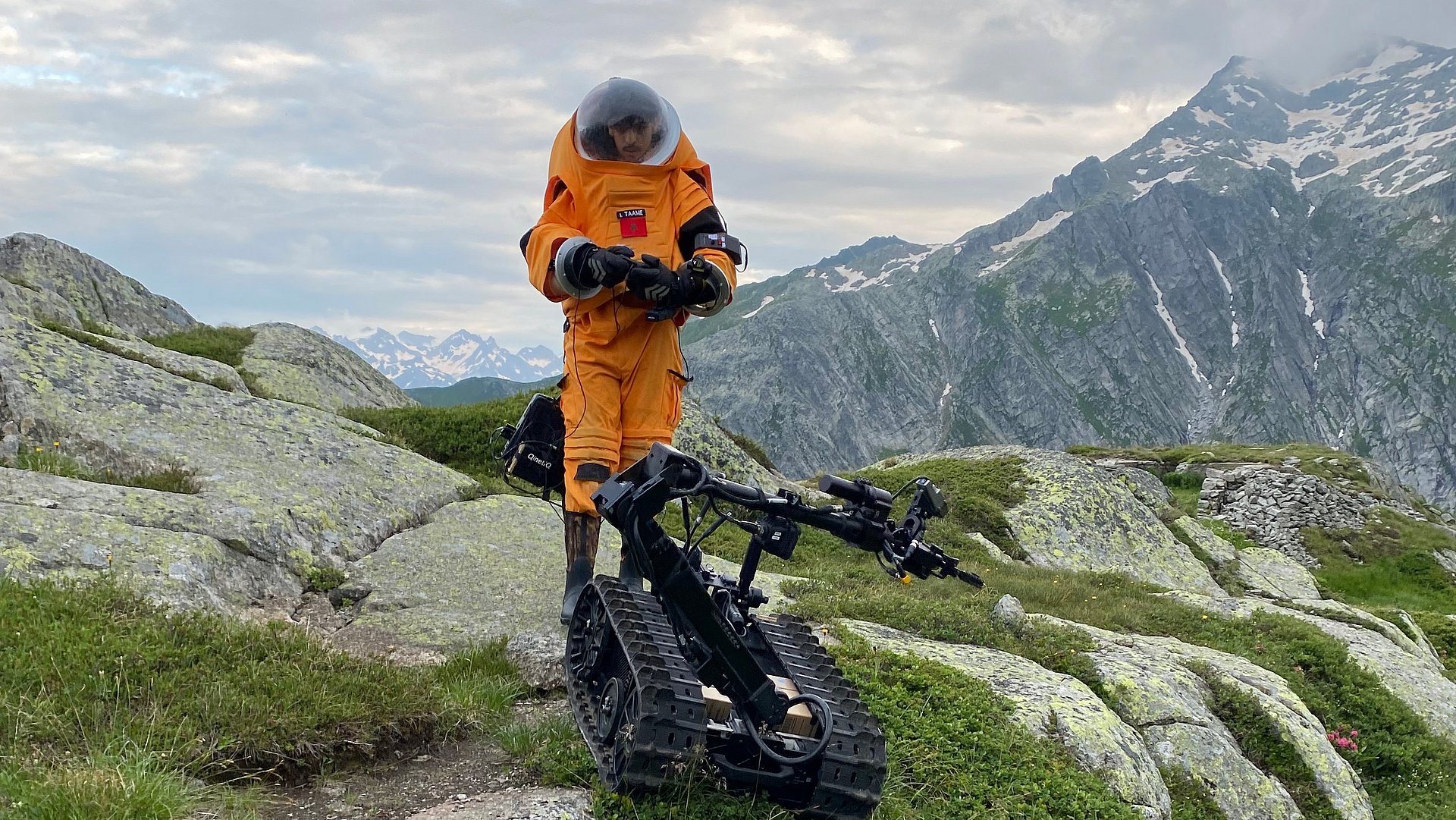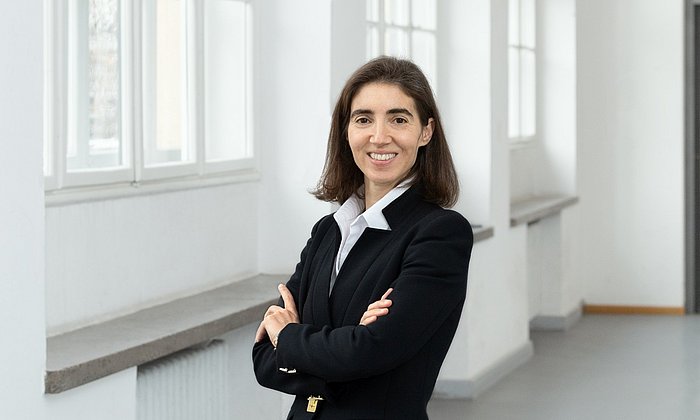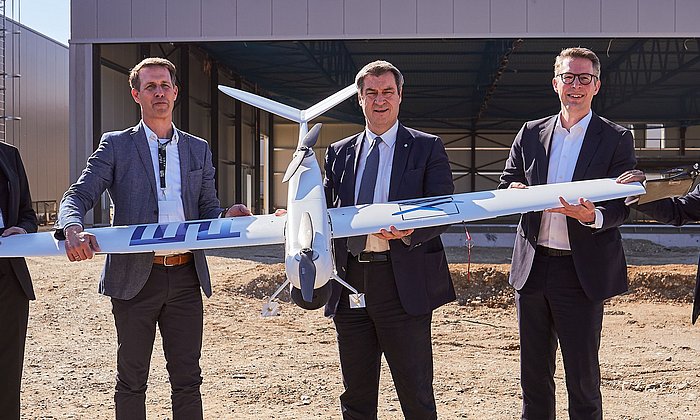Asclepios IV astronaut program
Student space mission underground
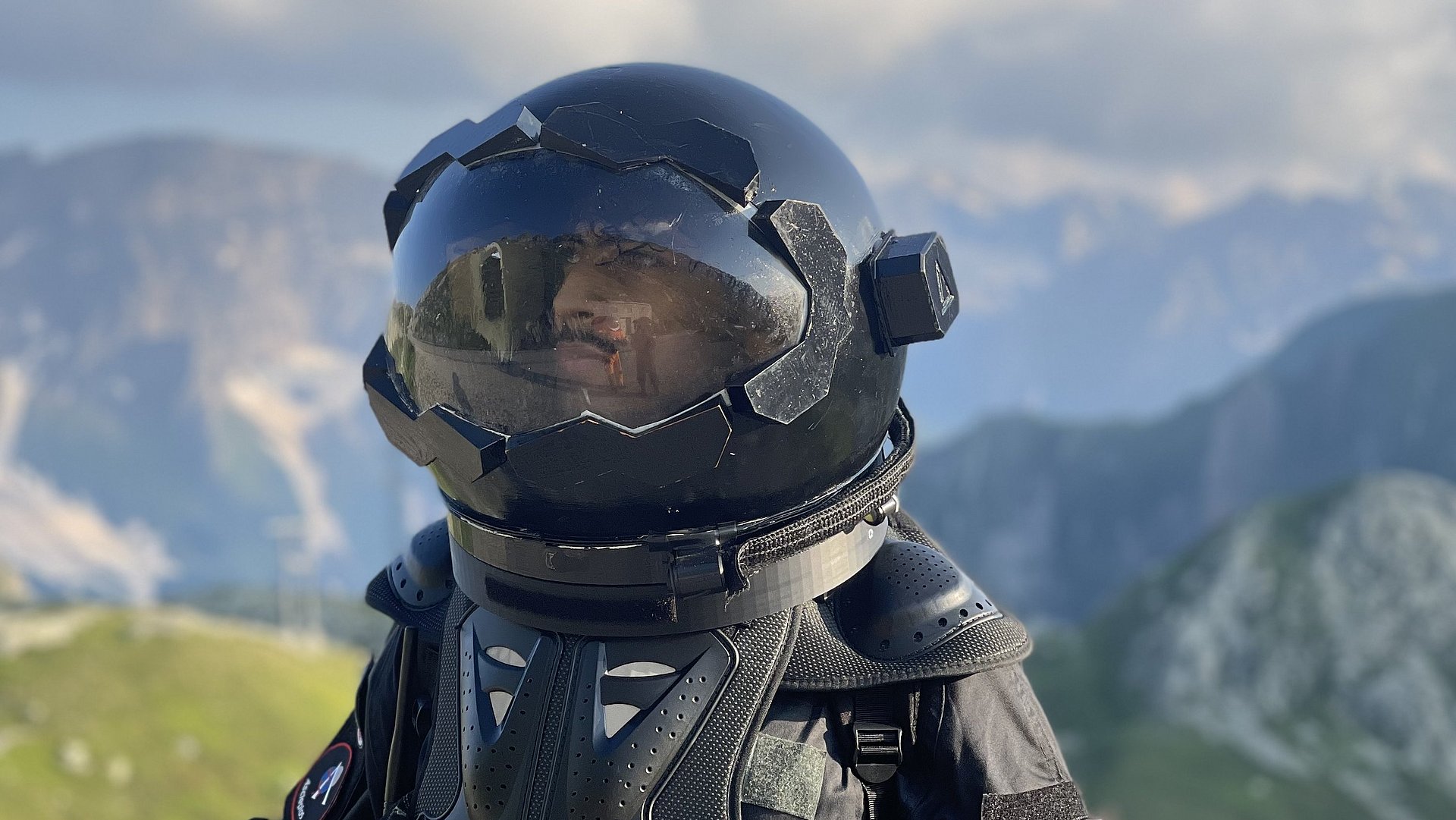
It's five in the afternoon on day six when contact is lost. Ilyasse Taame desperately tries to reach the field team over the communication system. The two crew members setting up a radio telescope outside the base station are supposed to report back. "Do you copy?", Ilyasse calls out repeatedly. Five minutes pass, then ten – still no answer. "That was the most critical moment of the whole mission, it was very stressful," he says. Ilyasse, who is Moroccan, is working towards a double Master's degree in Energy and Process Engineering at TUM and is actively involved in the student space initiative WARR. As Communication Officer on Asclepios IV, he is responsible for connecting the crew, the field team and the Mission Control Center. After 15 minutes, the relieving message: "Copy loud and clear". Contact reestablished.
The Asclepios IV space mission, which Ilyasse and five other students from various countries participated in during July of 2024, did not actually take place on the moon, but rather underground in the Swiss Alps. Built during the Second World War, the Sasso San Gottardo fortress features an extensive underground network of tunnels and chambers that replicate the confined spaces of spacecraft and space stations. This setting is ideal for studying human behavior in isolated environments and testing life support systems, communication protocols and other technologies essential to space missions.
Even though the students didn't leave the earth during their simulated space mission, they still had to adhere to strict safety regulations: "The external crew was probably in a 'black zone', out of range of the radio relays, which are located at regular intervals on the outer grounds of Sasso San Gottardo," Ilyasse suspects. "They were so engrossed in their work that they didn't notice that radio contact had been lost until very late." Just a few more seconds of radio silence, and the Mission Control Center would have had to declare a "loss of crew" and initiate a rescue attempt for the astronauts. This would have broken the isolation and thus the simulation, resulting in the failure and immediate termination of the mission, says Ilyasse.
Real space station rules
Everyday life on the underground space station was also strictly timed and based on that of real astronauts: Wake up at seven in the morning, team briefing, half an hour to eat breakfast and prepare, exercise, then the first work shift: The Asclepios crew also carried out various scientific experiments, just as on the ISS. For example, the students tested how well pine seedlings filtered used water, using centrifugal forces. They also investigated how extreme drought affected the photosynthetic performance of different wheat varieties growing in a substrate similar to moon rock.
"I enjoyed the experiments with the lunar rovers the most," says Ilyasse. The crew piloted mobile robots across the outdoor area of Sasso San Gottardo to test tasks such as drilling, collecting samples, transporting equipment and navigating difficult terrain assisted by cameras. "The thick space gloves and the weight of the spacesuit make it difficult to steer these expensive robots over the rocks," he says.
Lunch was for example freeze-dried curry or pasta with mushrooms, followed by an hour's rest. A second work shift followed in the afternoon, after which there was time for socializing, dinner and a debriefing. The strenuous daily routine and living together in a confined space with no contact to the outside world placed a major psychological strain on the students. Nevertheless, there were always light and happy moments during the two-week mission. "Sometimes we turned the music up loud and danced," says Ilyasse, "the mission definitely brought us closer together."
Between lecture hall and survival training
The student astronauts spent a lot of time together, even before the actual launch. The demanding six-month selection process is followed by a year of various training sessions based on NASA and ESA protocols to prepare the astronauts for survival in extreme conditions: They completed parabolic flights and experienced weightlessness, practiced firefighting in spacesuits, dove in a frozen lake and spent the night in snowy mountains – all in addition to their studies.
Taking part in the Asclepios mission is a big step toward Ilyasse's dream: "To become an astronaut." His chances of a real space mission are slim, he says, because positions are very limited and are in very high demand, and Morocco doesn't have a manned space program. But he'll remain persistent: After concluding the Asclepios mission, it'll be straight back to his desk, with his semester exams coming up. After that, he wants to focus on the topic of his Master's thesis. He would prefer to write it at a company in the aerospace industry. "I'm more determined than ever to pursue a career in space exploration, and I've gained a new level of confidence and readiness for whatever comes next.“
- Analog space missions serve as critical test beds for scientific and technological research in space exploration, providing a high degree of realism. Among the few such missions worldwide, Asclepios stands out as the only one organized entirely by students for students, while still benefiting from the mentorship of experienced astronauts and various space professionals. Asclepios IV simulates a 14-day crewed mission to the Moon, with a focus on exploration and habitat optimization.
- In the run-up to the mission, Ilyasse Taame attended the "Manned Spaceflight" lecture course by Gisela Detrell, Professorin für Human Spaceflight Technology, covering topics such as science in space, mission analysis and space stations and their subsystems. This proved to be particularly helpful for Ilyasse, both in the planning phase and during the mission itself.
- WARR is a student group at TUM, working on ambitious projects around the theme of space.
Technical University of Munich
Corporate Communications Center
- Undine Ziller
- presse@tum.de
- Teamwebsite
